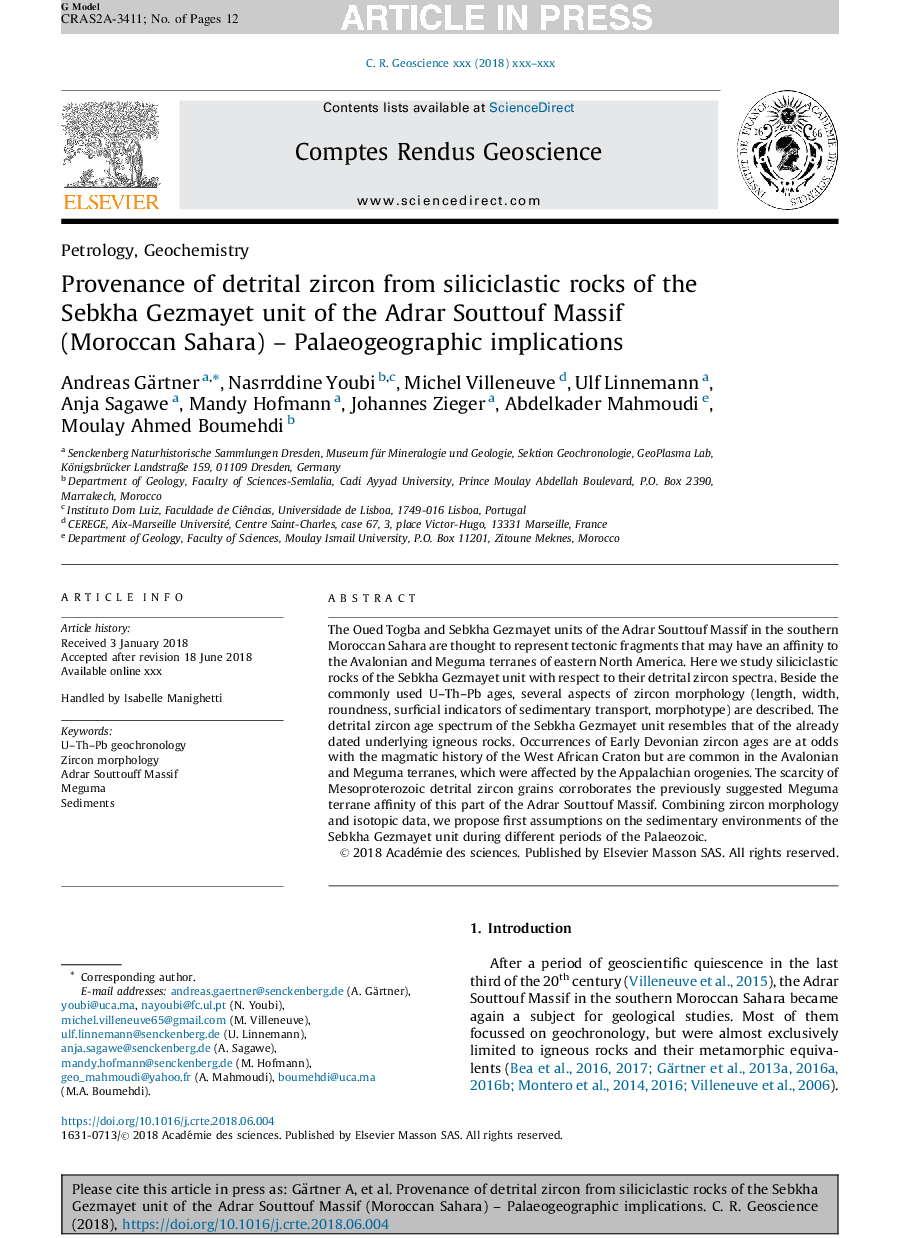| Article ID | Journal | Published Year | Pages | File Type |
|---|---|---|---|---|
| 8959358 | Comptes Rendus Geoscience | 2018 | 12 Pages |
Abstract
The Oued Togba and Sebkha Gezmayet units of the Adrar Souttouf Massif in the southern Moroccan Sahara are thought to represent tectonic fragments that may have an affinity to the Avalonian and Meguma terranes of eastern North America. Here we study siliciclastic rocks of the Sebkha Gezmayet unit with respect to their detrital zircon spectra. Beside the commonly used U-Th-Pb ages, several aspects of zircon morphology (length, width, roundness, surficial indicators of sedimentary transport, morphotype) are described. The detrital zircon age spectrum of the Sebkha Gezmayet unit resembles that of the already dated underlying igneous rocks. Occurrences of Early Devonian zircon ages are at odds with the magmatic history of the West African Craton but are common in the Avalonian and Meguma terranes, which were affected by the Appalachian orogenies. The scarcity of Mesoproterozoic detrital zircon grains corroborates the previously suggested Meguma terrane affinity of this part of the Adrar Souttouf Massif. Combining zircon morphology and isotopic data, we propose first assumptions on the sedimentary environments of the Sebkha Gezmayet unit during different periods of the Palaeozoic.
Keywords
Related Topics
Physical Sciences and Engineering
Earth and Planetary Sciences
Earth and Planetary Sciences (General)
Authors
Andreas Gärtner, Nasrrddine Youbi, Michel Villeneuve, Ulf Linnemann, Anja Sagawe, Mandy Hofmann, Johannes Zieger, Abdelkader Mahmoudi, Moulay Ahmed Boumehdi,
